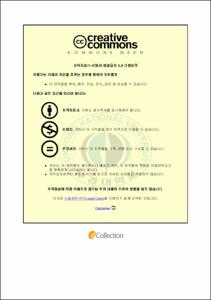International Competitiveness of Uzbekistan’s Mining Industries and Determinants of Uzbekistan’s Trade: Applications of RCAs and Gravity Models.
- Alternative Title
- 우즈베키스탄 광업의 국제적 경쟁력과 무역의 결정 요인: RCA와 Gravity모델의 응용
- Abstract
- Uzbekistan’s economic development path has been prescribed by IMF for developing nations as an Uzbek Model since country was the first to recover from Soviet collapse. Therefore, this research has explored and analyzed growth of Uzbekistan’s economy, trade and mining industries of the last two decades. At first, Revealed Comparative Advantage Indices were applied to measure the competitiveness of fourteen mining industries from 1996 to 2011. According to the outcomes, six industries (HS27, HS28, HS 71, HS74, HS79, and HS81) were found fully advantageous and the rest (HS25, HS26, HS68, HS72, HS73, HS75, HS76, and HS78) fluctuated or were disadvantageous. In addition, Gravity Model of Trade was applied to determine the factors that encourage or mitigate Uzbekistan’s trade and exports from 1992 to 2012 using Eviews 7.0 software. The analyses found that Uzbekistan’s exports and trade have positive correlation with the economic sizes of trading parties but its population size has no significance in Uzbekistan’s exports. In addition, Uzbekistan’s trade and exports have a positive correlation with a language, a border and colonial ties. In conclusion, chapters were summarized and policy implications were provided.
- Issued Date
- 2014
- Awarded Date
- 2014. 8
- Type
- Dissertation
- Publisher
- Department of International and Area Studies, Pukyong National University
- Affiliation
- Department of International and Area Studies, Pukyong National University
- Department
- 대학원 국제지역학과
- Advisor
- Prof. Ko Jong-Hwan
- Table Of Contents
- Table of Contents
Abstract (English)………………………………………………………………………ii
Abstract (Korean) ……………………………………………………………………...iii
Table of contents………………………………………………………………….……iv
Abbreviation…………………………………………………………………………...vii
List of tables………………………………………………………………………..…..xi
List of graphs……………………………………………………………………..........xii
CHAPTER I Introduction……………….………………………….……………….…1
1.1Background……………………………………………………………………...1
1.2 Objectives…………………………………………...………………………….3
CHAPTER II Overview of Uzbekistan’s economy…….……………………………...4
2.1 Consumption………………………………………………………………....…8
2.2 Uzbekistan’s foreign trade……………………………………………………..12
2.3 Major export goods and services…………………….………………………...13
2.4 Major import goods and services………………………………..…………….15
CHAPTER III. Uzbekistan-Korea economic bilateral relations……………….……..17
3.1 Overview of the relations………………………………………………………17
3.2 Bilateral Economic Relations in macroeconomic scope………………….........19
3.3 Korean FDI to Uzbekistan……………………………………………………..23
CHAPTER IV. Analysis of international competitiveness of Uzbekistan’s mining industries………………………………………………………………….…………..28
4.1. Method………………………………………………………………………...28
4.2. Data …………...……………………………………………………………....33
4.3. Major findings………………………………….……………………………...35
4.4 Conclusion and implications…………………………………...…………........52
CHAPTER V. Determinants of Uzbekistan’s trade……………………………..…...53
5.1 Introduction………………………………………………………………..…..53
5.2 Gravity theory…………………………………………………………….........58
5.3 Datasets and Variables……………………………………………………........63
5.4 Gravity model …………………………………………………………….…...64
5.5 Empirical analysis of Uzbekistan’s exports……...………...………...…...…....66
5.6 Empirical analysis of Uzbekistan’s trade………………………………….…..74
5.7 Conclusion…………………………………………………………………......80
CHAPTER VI. Conclusions and Policy Recommendations………………….……..82 Bibliography…………………………………………………………………………86
- Degree
- Master
- Files in This Item:
-
-
Download
 International Competitiveness of Uzbekistan’s Mining Industries and Determinants of Uzbekistan’s Tra.pdf
기타 데이터 / 1.3 MB / Adobe PDF
International Competitiveness of Uzbekistan’s Mining Industries and Determinants of Uzbekistan’s Tra.pdf
기타 데이터 / 1.3 MB / Adobe PDF
-
Items in Repository are protected by copyright, with all rights reserved, unless otherwise indicated.